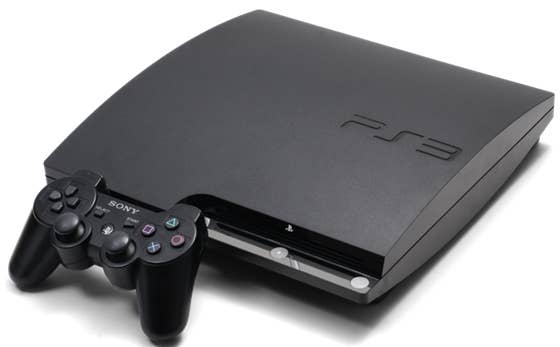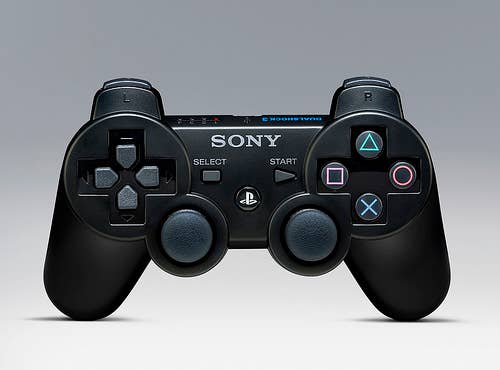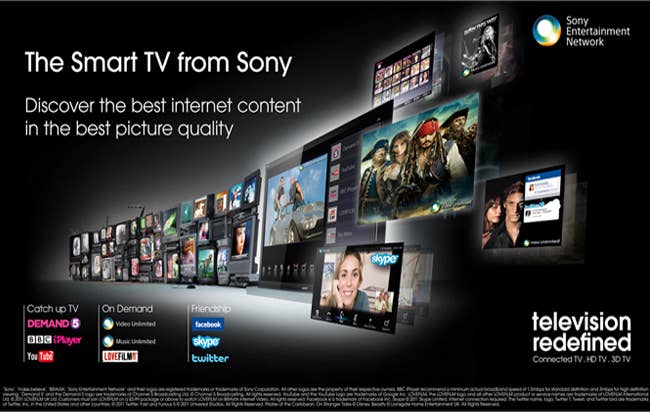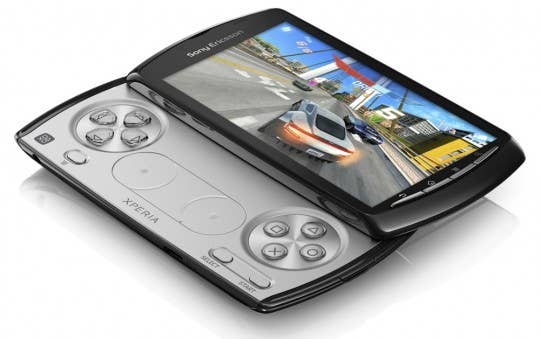The Rise and Fall of Sony - Part 2
Richard Browne continues his in-depth look at Sony's failings and how the future could indeed still be very bright
Yesterday, industry veteran and former Sony executive Richard Browne offered Part 1 of this special feature on Sony's rise to power in the video game business.
In Part 2 below, Richard looks at the many problems encountered with PlayStation 3, the impact of Microsoft and Xbox Live, Vita's early struggles, and he also offers a potential solution for how Sony can get its mojo back.
The PS3 : Did Sony blink?
The PS3 story is one full of fascinating twists and turns but in the overall scope of things the machine was as influenced by Microsoft and it was by Sony themselves. Sony was never one to toe the line in hardware design, and the PS3 set off on a journey that would somewhat be prematurely ended, and one that led to a great deal of difficulty for everyone who came into contact with it.
The cell chip was ambitious, somewhat ingenious, and something that developers had never had to deal with before. With an eight core parallel processing unit that initially didn't have great software tools to aid the division of labor, it took an awful lot of understanding. Sony at least understood that and got the cell development kit out to developers before the PS3 itself even had a GPU. The GPU was in a whole different world of problems. Sony's own proprietary system being developed with IBM wasn't working out, or if it was it wasn't going to be developed on the new schedule the machine was being targeted toward.
"The PS3 launched not only behind the 360 but at great expense to both the corporation and consumer; not since the disaster of 3DO had a machine been launched at such a high price"
Microsoft had lost a lot of money on the Xbox. In many circles discussion shifted away from when Microsoft would launch a successor to their first machine to whether they would at all. But when Xenon development kits started arriving, the reality of the date of the 360 became apparent. Beyond that, despite Microsoft's financial issues with the Xbox they had introduced something that had changed the face of gaming: Xbox Live. When Project Gotham 2 launched and showed how properly integrated multiplayer services could change gaming experiences Sony found themselves on the end of a problem that they were probably not well equipped to solve. PS2 multiplayer had been problematic at best... add-on peripheral requirements, multiple bandwidth alternatives and no central system. PS2 multiplayer was difficult to implement and somewhat arbitrary. With Xbox Live Microsoft had changed the game.

The PS3 wasn't going to be ready in the timeframe of the 360, not from a hardware perspective and not from a software perspective. But Sony decided that even with almost total control of the marketplace with PS2 it had to pull the machine in to compete with the 360. This had huge ramifications for Sony. The GPU solution that was being worked on would have to be shelved and a relatively off the shelf GPU put in to replace it; in the end, one has to think the PS3 GPU bottlenecks that exist today were a result of that call. More impactful in the real world, it meant that the cost of the machine, for both Sony and for customers at retail, was going to be much higher. Blu-ray was still a very expensive storage solution but one that Sony was banking on. High price or not, the PS3 had to have it. HDMI output was another costly standard.
When development kits finally arrived in full form with developers the machine was an absolute handful. The three processor solution of the 360 was far easier to cope with and far easier to understand than the central processors supported by the cell chip with its seven cores and SPURS (SPU Runtime System), limited memory and the ease of stalling the system causing multiple headaches in getting the machine to run smoothly.
Moreover, many developers had underestimated exactly how hard it would be to port from the 360 to the PS3; more than one developer had all but ignored the original cell development kits, preferring to wait for the GPU outfitted kit. But initially porting from 360 to PS3 was the only option. When Sony blinked and set the PS3 date, the development community shifted to being next-gen focused, and the days of the PS2 were going to be left behind.
The question that still vexes me to this day is what would have happened had Sony stayed on its original schedule for the PS3. There's no question that the hi-def 360 was turning heads, and there's no question that the lure of Live was a compelling argument for people to switch allegiance, but in the PS2 Sony had a huge installed base headed toward 100m and there was no question of any publisher abandoning the PS2 for a new platform with zero installed base. That's not to say that publishers wouldn't have developed software in quantity for the 360, but as with some of the early 360 multiplatform games they would have been PS2 ports (with resolution bump) rather than fully fledged 360 exclusives. A year is an awful long time in the console world though, and Sony was already going to be battling against some form of installed base from Microsoft.
Sony made their decision and the PS3 launched not only behind the 360 but at great expense to both the corporation and consumer; not since the disaster of 3DO had a machine been launched at such a high price. Beyond that, nearly all the cross platform software was inferior and their online experience while free was not as well formed (or, as it turned out, as secure) as Microsoft's now relatively mature Live platform.
To be absolutely fair to Sony, through hard work and aided by some extreme brand loyalty, especially in Europe and Japan, the system has matured and despite some hiccups along the way has become successful, if a long way from the dominance of the PS2. To that end, Microsoft deserves an awful lot of credit with what they've done with the 360 and the revolution and revelation that is Live.
The Vita - hubris or cultural blindness
With the PS3 finally faring OK in the marketplace Sony turned their attention to regaining some traction in the portable gaming market. The PSP had continued to turn decent numbers in Japan; with the iteration of hit titles like Monster Hunter it continued to show the machine had legs in its native territory. Hardware sales over the years had continued in the West to be reasonable as well, though software sales had for most titles slowed to the point where supporting the system no longer became viable. From a third-party perspective the PSP was never a great success, something that left most people in bemusement when the Vita made its first appearance on the scene.
"The Vita is almost DOA... it's evident from publisher and developer support that the future of the Vita is very much a problem for Sony"
Since the days of the PSP, the mobile gaming market had shifted remarkably. The advent of the iPhone had materially changed both what portable games meant and what prices people were willing to pay for them. Nintendo had moved from DS to 3DS and even with its new screen it hit significant problems in this area; the 3DS was nothing but a mild curiosity to many until last Christmas when the lure of a strong slate of Nintendo first-party software launches lured consumers back to Nintendo.
Vita came along with eerily similar promises to the PSP; it would be a PS3 in your pocket, it would have a proprietary storage system and, more interestingly to me, the same flawed ergonomic design. Once again Sony had gone down the path of a non-pocket sized device. The comparison that was offered was that it was more akin to the iPad conceptually, but unfortunately that also led back to the same problem that the PSP suffered from - it wasn't portable, it was a platform for the home on the couch (where iPads are also most used). Unlike the PSP, there was to be no problem with having parallel experiences on the Vita and PS3, and indeed, a large part of Sony's marketing campaign has actively pushed the concept of saving the game on your PS3 and starting where you left off wherever you are with your Vita. Alas, that contradicts itself, unless you want people to sit on a couch playing the PS3 game that's also right in front of them.

From all I know, this initial pitch was derided by pretty much everyone; it was not what publishers had expected. The early rumors about Vita suggested that it was going to be a phone, with carriers brought in to subsidize the hardware, a totally digital eco-system with no traditional retail components. After all, the PSP Go had pioneered this concept already, but found itself hamstrung by the need for the machine to be distributed by the retailers that digital software delivery was meant to make irrelevant.
People's expectations of on the go software had also changed. Entertainment is time and in this day and age there is far more entertainment available than can be consumed in the hours people have available; moreover, a lot of it is either free or extremely cheap. Sony was saying they were bringing to market basically a revamped PSP and nobody was terribly happy about it. The machine needed to be a phone, the machine needed to be distributed through alternative channels (carriers), it needed to fit in your pocket, it needed to solely be supplied via digital channels and with onboard storage large enough to store apps and games. Those games should not necessarily be immense blockbusters with high development costs, but should range in price the way the App Store does. The message from the West was quite clear.
In Japan the message was clearly not being heard. The message was clearly sent, the response back was to stay on target. The PSP was successful in Japan, continued to be successful and even now has been shown to actually outsell the newer machine (how much of that is down to demand or available stock this past Christmas is debatable) thanks to certain software availability. The gamer in Japan is still very much a core market that will play PSP, DS, 3DS and in time possibly Vita when the core IP that propelled the PSP to great success becomes available. In the West, though, that has not proven the case and the Vita is almost DOA. Sony has been very cautious with giving exact numbers of units sold, but it's evident from publisher and developer support that the future of the Vita is very much a problem for Sony.
That is not to say the machine isn't beautiful, functional and downright desirable in a certain light. But in a world of freemium and 99-cent games to play while sitting on a bus on a device that sits in my pocket and easily handles the rest of my busy life, carrying a Vita along as well is a big ask, as is asking me to spend $40 on software that frankly I'd rather play at home on my HDTV. Uncharted as the killer app for the platform was stunning as a showpiece for the technology, but also was clear a message as could be sent that Sony doesn't understand where the portable gaming market has gone. And without IP as perennial as Nintendo, it's truly difficult to see how the Vita can be made relevant in today's market.
The Future - Can Sony Rise Again?
The question of Sony's ability to rise to the forefront of the games industry has an even greater weight than ever before; it's not just Sony Computer Entertainment that's fallen from grace, but it's Sony as a Corporation. With mounting losses, an uncompetitive core electronics business, more and more Sony has become as much a purveyor of entertainment as it is a consumer electronics company of the past.
"They have to define that lifestyle connection that they did so well with the PlayStation, but now they have to revitalize the company around it in everything they do"
With Kaz Hirai now taking charge at what can only be described as an awkward time - after all, Sony's fortunes are not good and at the end of the day the Vita has his name on it - there are a host of questions of whether or not Sony can become relevant again. They've lost the portable music player space, they've lost the TV space, they're losing the video game battle... just where does Sony go now?
The Vision - "My Sony Life"
Jack of all trades, master of none... to a great extent this is what Sony has become. At one time or another they've been on top of the game wherever they played, but right now that's all in the past and the only end game for Sony is to focus, streamline and merge their efforts into one concerted effort at rebuilding their brand and their relationship with the consumer. They have to define that lifestyle connection that they did so well with the PlayStation, but now they have to revitalize the company around it in everything they do. My Sony Life is all about connecting each of their devices to each of their consumers and each of their consumers to one another in a single software solution, a software solution powered by their hardware. To this there are many elements in the Sony empire.
The Trojan Horse
Interestingly, what sparked a lot of people's curiosity with Hirai's first realignment moves recently was the fact that the TV division was still kept intact. There had been a lot of speculation that the axe would fall and Sony would give up the TV space to the competition that caught and passed them, Samsung and LG among them. However strange it may seem, to my mind not culling their TV business may be the smartest thing Hirai has done to date. In my view, it can be a core building block for the company moving forward, although they must streamline their TV line drastically. Don't compete with LG and Samsung; focus on three TVs of differing sizes that offer high spec and support the concept of My Sony Life.
"DualShock in particular gives Sony a leg up on the perennial issue of TVs and controllers; it's familiar, will be widely available, so make it connect"
Ever since the PS1, Sony has had this vision of "owning the living room." Microsoft has it too and both have promoted the PlayStation and Xbox lines as being the Trojan horse to achieve that goal. But there are two problems with that philosophy. Love the platforms as we might, they're not for the masses no matter what interface you put on them, and more relevantly for Sony, why are you trying to force through in a Trojan horse when you already have an invitation inside the castle? Sony has an opportunity in the next few years to either turn the boat around or go flailing over the falls, and a key to it could be the TV.

TV remains the center of family life; allow it to connect to every device you own and it becomes even more so. My Sony phone, my Sony tablet, my Sony MP3 player, my Sony camera, the next Sony DualShock, my PS4, my Vita - if they're in the room with the TV they should be connected. DualShock in particular gives Sony a leg up on the perennial issue of TVs and controllers; it's familiar, will be widely available, so make it connect.
Software > Hardware
With Internet ready TV, the PS4, phones, tablets, cameras, MP3 players all needing to talk to each other, by far the biggest part of Sony's puzzle is the software services piece. Whether on my phone, my tablet, my TV, my PS4, my Vita, or my camera, there has to be an interface and a store that works and easily, conveniently, quickly, stores all my information under one account - basically all the things that Apple does very, very well. No matter where I am or what I'm doing I need to be tethered to "my Sony life". It's where Sony has given up huge ground to Microsoft in this generation of consoles with Xbox Live, and they can no longer afford to be behind in connecting their consumers to their hardware, to the software they wish to run therein or to their social network.

Phones on the go and at Home
Sony's buyout of its Sony/Ericsson phone partnership toward the back end of last year was a major stepping stone towards starting a synergistic path. There were a lot of politics involved in that partnership, and it now gives Sony full control over its destiny in the smartphone market. It seemed very evident from the outside that the release of the PlayStation phone (or Xperia - as SCE wouldn't let them use PlayStation) was almost forcibly done; I've often questioned exactly who leaked those early pictures of it, as it struck me as a leverage play that was quite deliberate.
The fact that Vita did not become a phone might also have some basis in this joint venture as well, but the road is now clear for Hirai - you control your smartphone business so get some smart people building hardware that is desirable again and make sure it integrates into my life in a really smart manner.

If the TV is the center of my home life, the phone is the center of the rest of it and they should connect as if one. If you want an example of this, oh look, see Apple for more info; but I don't want to buy the $99 box, it just has to work. Apple is clearly gunning for the living room through the ubiquitous iOS devices and their little box. Everyone knows Apple will at some point launch a TV and without question they'll do all they can to put the Apple TV chipset or functionality into any TV they can. Sony has that ability already, so when I walk into the living room with my phone or tablet it had better know it; I want to continue "my Sony life" on the couch.
Gaming Life - Always on, everywhere
Without question, the Orbis, or whatever the PS4 is ultimately labeled, is probably the most important consumer product launch in Sony history. It comes at a very interesting time in the development of the console market; it's no coincidence that both Microsoft and Sony will be no shows at E3 this year, as neither they (nor third parties) particularly want the next generation to dawn prematurely. Both know that as soon as they make official announcements they start the countdown to the end of the PS3/360. With the current predicted launch timing for Christmas next year, the question of to disc or not to disc seems answered, and Sony's support of Blu-ray is inevitable (although they're obviously more committed to that disc format than Microsoft, I think in the end both will go that way).
Where Orbis is most critical is in selling the sort of combined infrastructure that My Sony Life could deliver. One has to assume that even if Sony did move on the TV solution, not everyone is going to buy one and therefore Orbis would become the hub. Any Sony device should connect to it and be productive through it. The biggest leap Sony has to make is in the software available for the machine. It needs to be as open a format as possible, with a digital ecosystem supporting every line of software known to man, from 99-cent apps and freemium indie games, to $5 downloads and $60 retail, to disc-based to digital download. The software for the device needs to be driven not by history but by consumer patterns as they are evident now.
"Over the past two decades the symbolic power of Sony in games has come to rest on the PS logo; it's perhaps a symbol that can be the basis for a united form for the company"
That content should also be supported through other formats, and the likes of Gaikai and Onlive prove there's a good alternative method of software delivery straight to the TV or phone, no console required. With a digital only single user sign-in infrastructure I could be playing Uncharted 4 on my PS4 when at home, cloud save it and play a slightly degraded version through streaming wherever I find a Sony TV or a phone connected to the web (as long as I have a Dual Shock paired). Buy one copy and play anywhere. All through "My Sony life".
United We Stand
Over the past two decades the symbolic power of Sony in games has come to rest on the PS logo; it's perhaps a symbol that can be the basis for a united form for the company. The PS button should appear on every Sony device from now on, and it should connect me to "My Sony life", whether I'm on the couch, on the bus or running to a meeting. If that's the route, it will be fueled by Kaz Hirai, by SCE, and by the legacy of the PlayStation. At this point in Sony's corporate life, it is undoubtedly the one brand they can truly embrace and base the future around.
Twenty years ago I don't think you'd have found a taker on a bet that the fate of Sony Corporation would rest upon the name "PlayStation." Today it's quite simply the only option.

